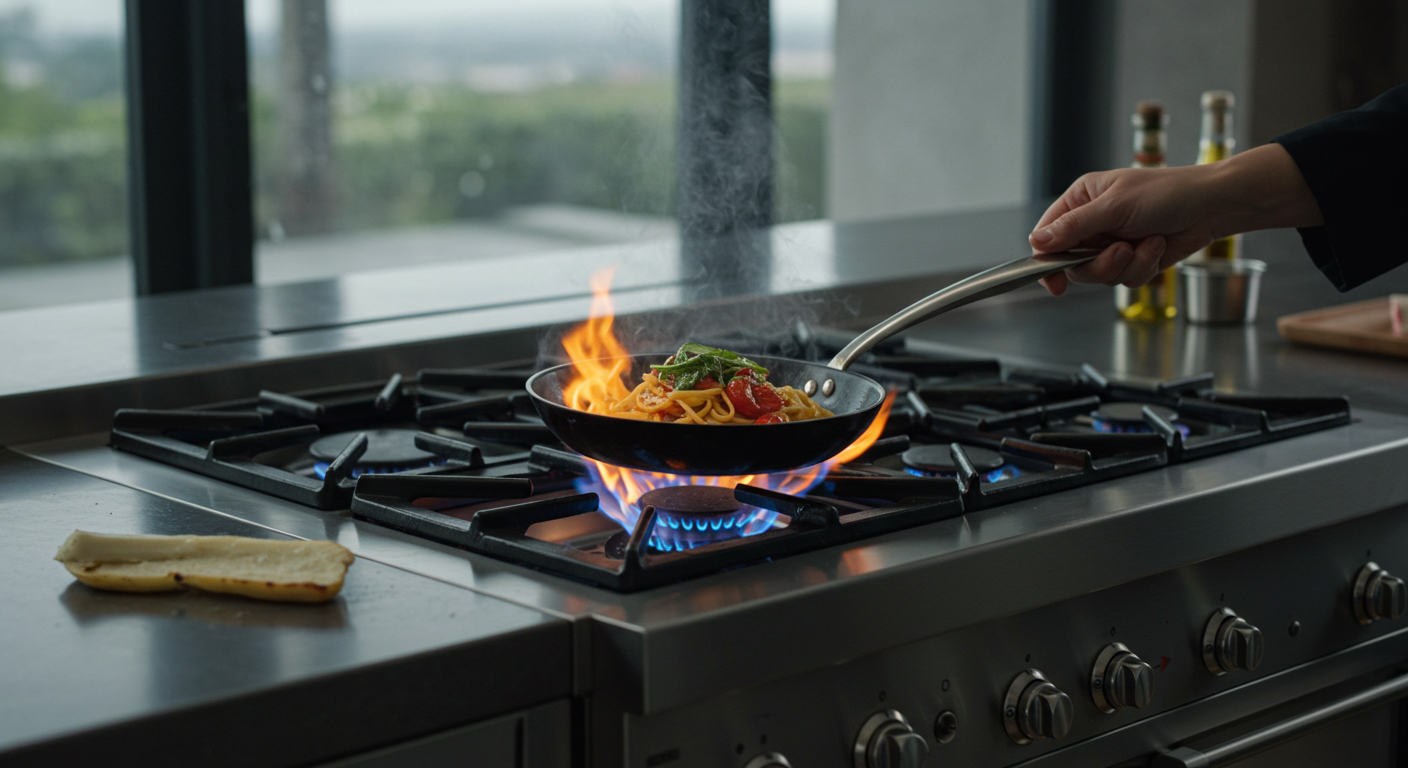
If you’ve ever boiled over a pot of pasta or seared a steak with the flame cranked too high, you already know that not all burners handle heat the same way.
Open burners give you fast, direct heat with no barrier in the way. They’re a favorite in restaurant kitchens for a reason. Sealed burners trade some of that raw intensity for control and cleanup. They’re capped off at the base, so spills don’t drip down into the guts of your range.
Each one has its place. Whether you're looking for power, precision, or just less cleanup, the type of burner you choose can change how your kitchen works day to day. When browsing options at Innovdepot, you'll notice this fundamental difference affects everything from cooking performance to daily maintenance.
If you're deciding between an open burner and a sealed burner, here's a simple way to see how they compare where it really matters.
An open burner has an exposed flame and a burner head that's not sealed to the base of the range. You’ll find this style in many professional kitchens because it delivers direct, concentrated heat right to your pan. That makes it ideal for cooking styles that demand precision, like wok cooking, fast boiling, or searing steak.
Since open burners allow more air around the flame, they can burn hotter and adjust faster. Many professional chefs prefer this type of burner for its responsiveness, especially in culinary environments where timing matters.
But there’s a tradeoff: cleanup. With a burner area that’s open underneath, spills and drips don’t stop at the surface. Grease and sauce can reach into the inner parts of the cooktop, making regular maintenance more of a task. Still, if power and control matter more to you than a quick wipe-down, an open burner range could be a perfect fit.
A sealed burner is designed with the burner head sealed to the base, so nothing leaks below the cooktop. That small design choice changes a lot, especially when it comes to cleanup.
When something boils over or splashes out of a pan, it stays on top. There’s no open space for grease or sauce to fall into. For most home cooks, that’s reason enough to go sealed. It's no surprise that sealed burner ranges are now the go-to in most modern homes.
These burners also distribute heat more evenly, which helps when you’re simmering something delicate or multitasking across different pans. You won’t get the same direct flame feel as an open burner, but you’ll gain stability, energy efficiency, and easier maintenance.
If you do a lot of weeknight cooking or just want your kitchen to stay cleaner longer, a sealed burner is a solid choice.
So, which type of burner makes more sense for you? Here’s how to think about it:
Also, consider your kitchen layout. If you're working with kitchen appliance packages or buying a full suite of new gear, a sealed burner range tends to match better with modern finishes and features. For instance, ZLINE appliance packages often feature sealed burners that complement their sleek, contemporary designs while delivering professional-grade performance.
Bottom line: both burner styles work. The right one depends on your cooking style, your space, and how much cleanup you’re willing to handle after the meal.
At the end of the day, this isn’t a question of better or worse—it’s about what fits your kitchen and your cooking habits.
If you’re after precision, high BTUs, and love to work directly over a flame, an open burner range gives you pro-level results with fast heat control. If you’d rather focus on cleanup, energy efficiency, and low-maintenance cooking, a sealed burner may be the easier everyday pick.
Both burner types show up in high-end kitchen appliance packages, and either can work with a gas range, griddle, or even wok cooking setups. It all comes down to what kind of cooking experience you want and how much cleanup you’re okay with.
Q: Is an open burner harder to clean?
Yes. Because of the exposed flame and lack of a sealed base, open burners let spills fall inside. That means you’ll need to disassemble parts and clean more often, especially if you cook with sauces or oil.
Q: Do sealed burners affect cooking performance?
Not significantly. While sealed burners don’t have the same direct flame exposure, most still reach high BTU levels and perform well. They're great for simmering and multi-pan cooking, and they often distribute heat more evenly.
Q: Are open burners only for chefs?
No, but they are more common in professional kitchens. Chefs consistently choose open burner ranges for the precision and control. That said, many home cooks prefer them too—especially when doing tasks like searing or using large cookware.
Q: Which burner type lasts longer?
Both can last a long time with regular maintenance. A sealed burner is different in that it usually has fewer exposed parts, which can help prevent damage over time. But with proper care, open and sealed gas burners are both durable.
Q: Can I swap a sealed burner for an open burner?
Not easily. The burner area, grates, and often the cooktop itself are designed around that burner type. If you want to switch, it usually means buying a new range.